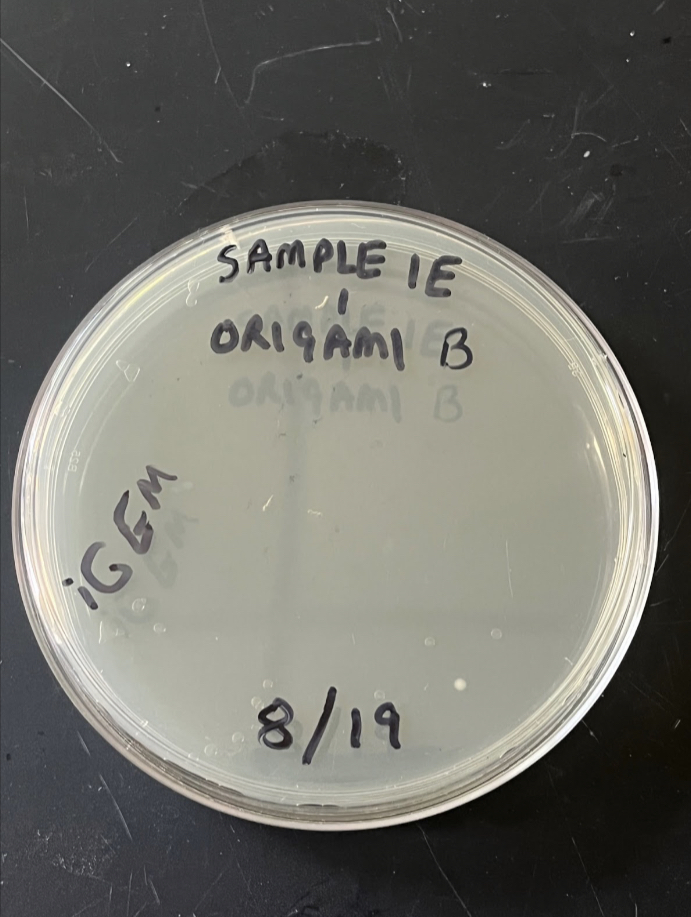Part:BBa_K4235018
Ampicillin Resistance Gene
Introduction: Ampicillin is one of the most common selection markers used in synthetic biology. Its structure contains a β-lactam ring that inhibits proteins involved in bacterial peptidoglycan synthesis. As a result, bacteria cannot synthesize new peptidoglycan which disrupts the formation of cell walls and leads to cell death. The ampicillin resistance gene encodes for the enzyme β-lactamase, which cleaves the β-lactam ring and inactivates the ampicillin, thereby providing resistance to the bacteria.
Usage and Biology: This is the Ampicillin Resistance gene which is used within the plasmid and it confers resistance to Ampicillin. The expression of the ampicillin coding sequence is driven by the AmpR promoter BBa_K4235017. This marker was used for the selection of successful transformants after cloning our gene insert BBa_K4235011 in the plasmid BBa_K4235016.
Characterization
This Ampicillin resistance gene provided resistance to our recombinant vector. Working concentration of Ampicillin in Agar plates was 100 ug/mL
(1.) Transformation of Dh5alpha post LIC reaction:

We transformed our annealed construct after the LIC reaction into Bl21. Colonies growing on Ampicillin plates confirm the presence of recombinant vector. The LIC (Ligation Independent Cloning) reaction was carried out as follows:
* Reaction 1: 2 uL of insert LIC product + 10 uL of vector LIC product + 8 uL Molecular grade H2O.
* Reaction 2: 5 uL of insert LIC product + 10 uL of vector LIC product + 5 uL Molecular grade H2O.
Concentrations of the insert and vector after the LIC reaction were 5.55 ng/uL and 68.35 ng/uL respectively
(2.) Transformation of Bl21 using the recombinant vector:

Transformation reaction:
*1 uL recombinant vector was added to a tube of Bl21 cells.
Place the tube on ice for 30 minutes.
* Place the tubes on the 42 C heat block.
* Place the tube on ice for 2 minutes.
* Add 1 mL of LB Broth to the tube and incubate in the shaker at 37 C, 220 rpm for 1 hour.
* Plate 150 ul from the transformation tube on ampicillin agar plates.
As evident from the figure, transformation was successful and colonies grew after incubating for about6 hours at 37 C.
(3.) Transformation of Origami B using the recombinant vector:

Transformation reaction:
*1 uL recombinant vector was added to a tube of Origami B cells.
Place the tube on ice for 30 minutes.
* Place the tubes on the 42 C heat block.
* Place the tube on ice for 2 minutes.
* Add 1 mL of LB Broth to the tube and incubate in the shaker at 37 C, 220 rpm for 1 hour.
* Plate 150 ul from the transformation tube on ampicillin agar plates.
As evident from the figure, transformation was successful and colonies grew after incubating for about6 hours at 37 C.
Sequence and Features
- 10INCOMPATIBLE WITH RFC[10]Illegal PstI site found at 542
- 12INCOMPATIBLE WITH RFC[12]Illegal PstI site found at 542
- 21COMPATIBLE WITH RFC[21]
- 23INCOMPATIBLE WITH RFC[23]Illegal PstI site found at 542
- 25INCOMPATIBLE WITH RFC[25]Illegal PstI site found at 542
- 1000INCOMPATIBLE WITH RFC[1000]Illegal BsaI site found at 716
//cds/selectionmarker/antibioticresistance
//chassis/prokaryote
| None |
